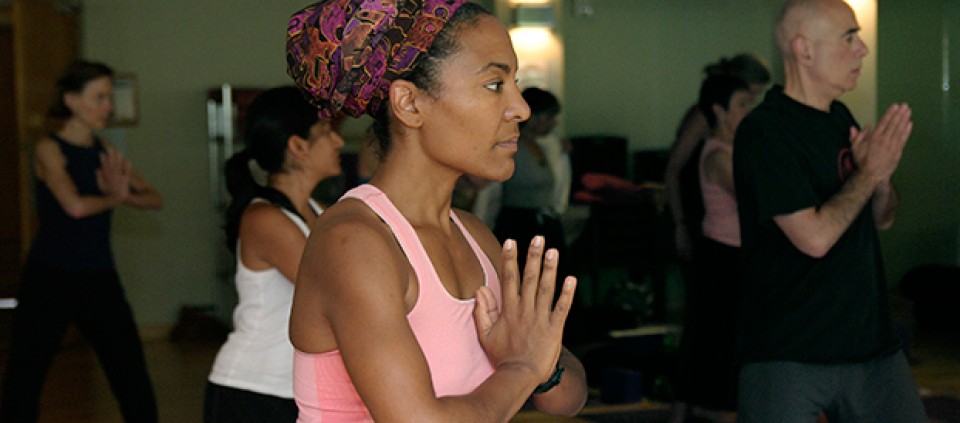Quieting the Critic with Ahimsa

by Janet Arnold-Grych
It’s said that when Swami Kripalu first came to the United States, he was surprised at the harsh self-judgment that students in the West seemed to possess. In our culture, many of us are familiar with that sharp-edged inner voice. When I first started practicing yoga, my teacher had a particular balancing sequence and, whenever he would begin it, I would hear myself say, “Uhhhh. I’m so bad at balancing.”
And guess what—I was. I’d already undercut myself before even assuming the poses. Experience and teachers have taught me that balancing is 20 percent physical and 80 percent mental. With time and practice, I’ve been able to dial down my mind and become better at balancing. Much of that is about embracing ahimsa.
Ahimsa means nonviolence toward others, our environment, and ourselves. It emerges when we replace judgment and criticism with observation and an open mind. Kripalu Yoga teacher and former Dean of the Kripalu School of Ayurveda Larissa Hall Carlson can immediately spot when a student is not practicing ahimsa. “One of the first things I notice when a student starts to force the body or ignore limitations or injuries is that the smoothness of the breath disappears,” says Larissa. “Instead of looking peaceful, serene, and relaxed during the skillful investigation of a challenging pose, they look strained, intense, and overly competitive.”
We play the role of critic and assign value. And, the more we do this, the more natural it feels. Just for a day, assume the role of anthropologist in your own life. Observe how often you roll your eyes, how often you become agitated with yourself or others. The Yoga Sutras tell us that when we do these things, we bring harm to ourselves because, when we judge, we lose the ability to be an impartial observer and see our true opportunities for improvement.
One of the powers of yoga is that discovery on the mat translates to insights off the mat, and that includes applying ahimsa. “When a student can truly appreciate listening for and responding to the requests of the body on the mat—coming out of a pose when tired, avoiding a posture that pokes at an injury, doing a more gentle practice when feeling sick or exhausted—there is a better chance for skillful self-care practices at home and work,” says Larissa. “Practicing all yogic techniques with ahimsa offers endless opportunities to strengthen one's ability to make healthy and positive choices throughout life.”
Ahimsa doesn’t mean we avoid change or hard work. If we commit to practicing ahimsa, we commit to placing things into the light and addressing them with compassion. We need a healthy dose of self-discipline in our work, our communal commitments, even our yoga practice. That discipline or fire—also known as tapas—keeps us accountable. Larissa explains, “Tapas is what keeps us on the mat, exploring the challenging work of transformation. By balancing ahimsa and tapas in our yoga practice, we can steadily progress on the path without causing disharmony in the body and mind.”
When it comes to self-reflection, we are often our own harshest critics, belittling our outcomes on the yoga mat or magnifying our frailties at home. This judgment limits our ability to witness and grow. Listen for the critical chatter, and see if you can apply a little ahimsa to soften the edges. You might find that you’re better able to balance, in more ways than one.
Find out about programs with Larissa Hall Carlson at Kripalu.
Janet Arnold-Grych is a yoga teacher and writer whose work has been published in Elephant Journal, Huffington Post, Third Coast Digest, and other outlets.
© Kripalu Center for Yoga & Health. All rights reserved. To request permission to reprint, please e-mail editor@kripalu.org.